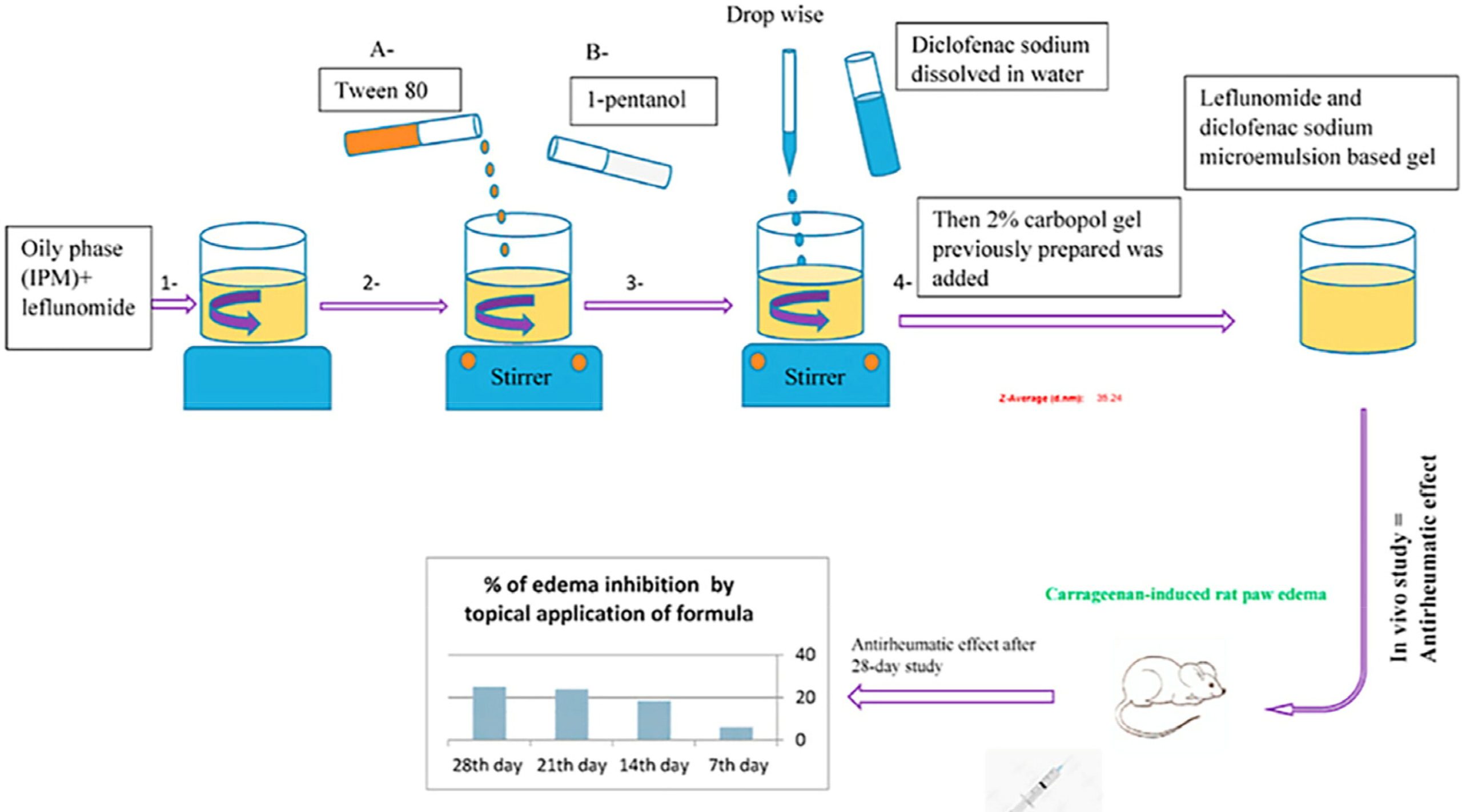Transdermal delivery of inflammatory factors regulated drugs for rheumatoid arthritis

Rheumatoid arthritis is a chronic autoimmune disease, with the features of recurrent chronic inflammation of synovial tissue, destruction of cartilage, and bone erosion, which further affects joints tissue, organs, and systems, and eventually leads to irreversible joint deformities and body dysfunction. Therapeutic drugs for rheumatoid arthritis mainly reduce inflammation through regulating inflammatory factors. Transdermal administration is gradually being applied to the treatment of rheumatoid arthritis, which can allow the drug to overcome the skin stratum corneum barrier, reduce gastrointestinal side effects, and avoid the first-pass effect, thus improving bioavailability and relieving inflammation.
This paper reviewed the latest research progress of transdermal drug delivery in the treatment of rheumatoid arthritis, and discussed in detail the dosage forms such as gel (microemulsion gel, nanoemulsion gel, nanomicelle gel, sanaplastic nano-vesiclegel, ethosomal gel, transfersomal gel, nanoparticles gel), patch, drug microneedles, nanostructured lipid carrier, transfersomes, lyotropic liquid crystal, and drug loaded electrospinning nanofibers, which provide inspiration for the rich dosage forms of transdermal drug delivery systems for rheumatoid arthritis.
Introduction
Rheumatoid arthritis (RA) is a chronic autoimmune disease accompanied by infiltration of inflammatory cells and proliferation of synovial fibroblasts, which can lead to synovial damage, cartilage damage, and joint deformities (Deng et al., 2021). The incidence rate of RA is about 1% of the total population, and it is higher in females than in males. RA is accompanied by a trend from mild injury to severe disability, which can reduce the life expectancy of patients from 10 to 15 years (Scott et al., 2010).
The physical and chemical properties, genetic factors, and environmental factors involved in RA are complicated, so the specific pathogenesis of RA is still not completely clear. However, the pathogenic inflammatory factors of RA have been extensively studied (Brzustewicz & Bryl, 2015). The etiology of RA includes the complex role of genetic factors, external environmental factors and specific risk factors (smoking, periodontitis, gut microbiome) on individuals. The complex role resulted in the over-expression of autoantibodies rheumatoid factor (RFs) and anti-citrullinated protein antibodies (ACPAs), which would activate B cells, T cells and macrophages, then resulting in the produce of inflammatory factors (mainly consist of tumor necrosis factor-α (TNF-α), interleukin-6 (IL-6), and interleukin-1 (IL-1)) (McInnes & Schett, 2017; Gorantla et al., 2020; Petrovska et al., 2021). These inflammatory factors destroy cartilage and bone, and finally result in joint erosion (Figure 1). TNF-α can activate the abnormal proliferation of fibroblast-like synoviocytes (FLS), which leads to overexpression of cathepsin and matrix metalloproteinases (MMPs). Then collagen and proteoglycan breakdown, finally leading cartilage and bone destruction (Yoshitomi, 2019). After binding to the receptor, IL-6 can trigger a dimerization signal of the cell surface molecule glycoprotein p130, which activates the Janus kinase (JAK)/activator of transcription (STAT) pathway, thus promote inflammation (Simon et al., 2021; Weng et al., 2021). IL-1 and TNF-α could activate Nuclear factor Kappa-B (NF-κB) pathway, which upregulation cyclooxygenase 2 (COX-2) and proinflammatory cytokine MMP, finally resulting in cartilage degeneration and synovial erosion (Wang et al., 2017; Guo et al., 2019).
Download the research paper as PDF: Transdermal delivery of inflammatory factors regulated drugs for rheumatoid arthritis
Excipients mentioned in the study besides other: Capryol 90, Compritol 888 ATO, Carbopol 934, Eudragit RS, Tween 80, HPMC 4000,
(2022) Transdermal delivery of inflammatory factors regulated drugs for rheumatoid arthritis, Drug Delivery, 29:1, 1934-1950, DOI: 10.1080/10717544.2022.2089295

